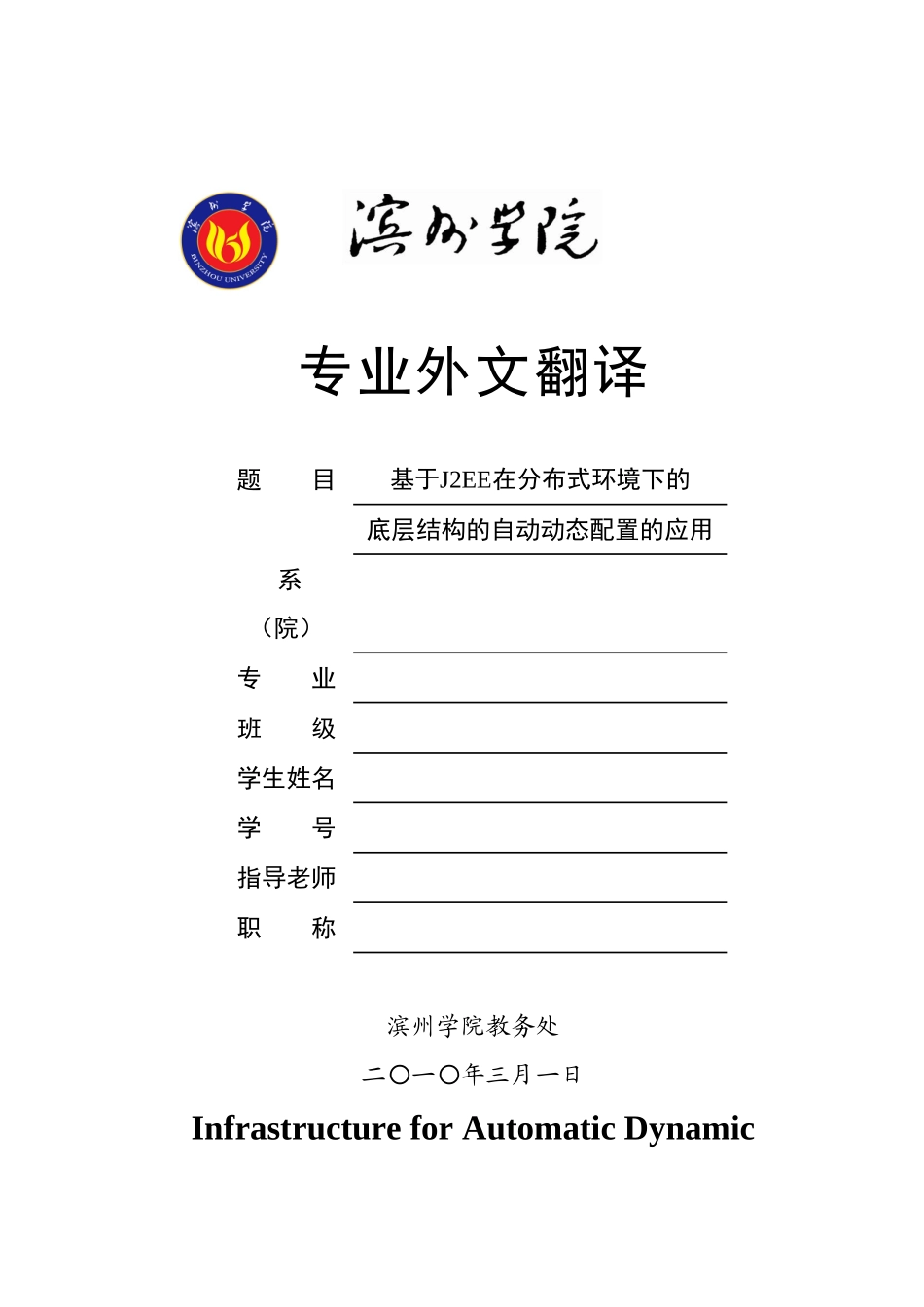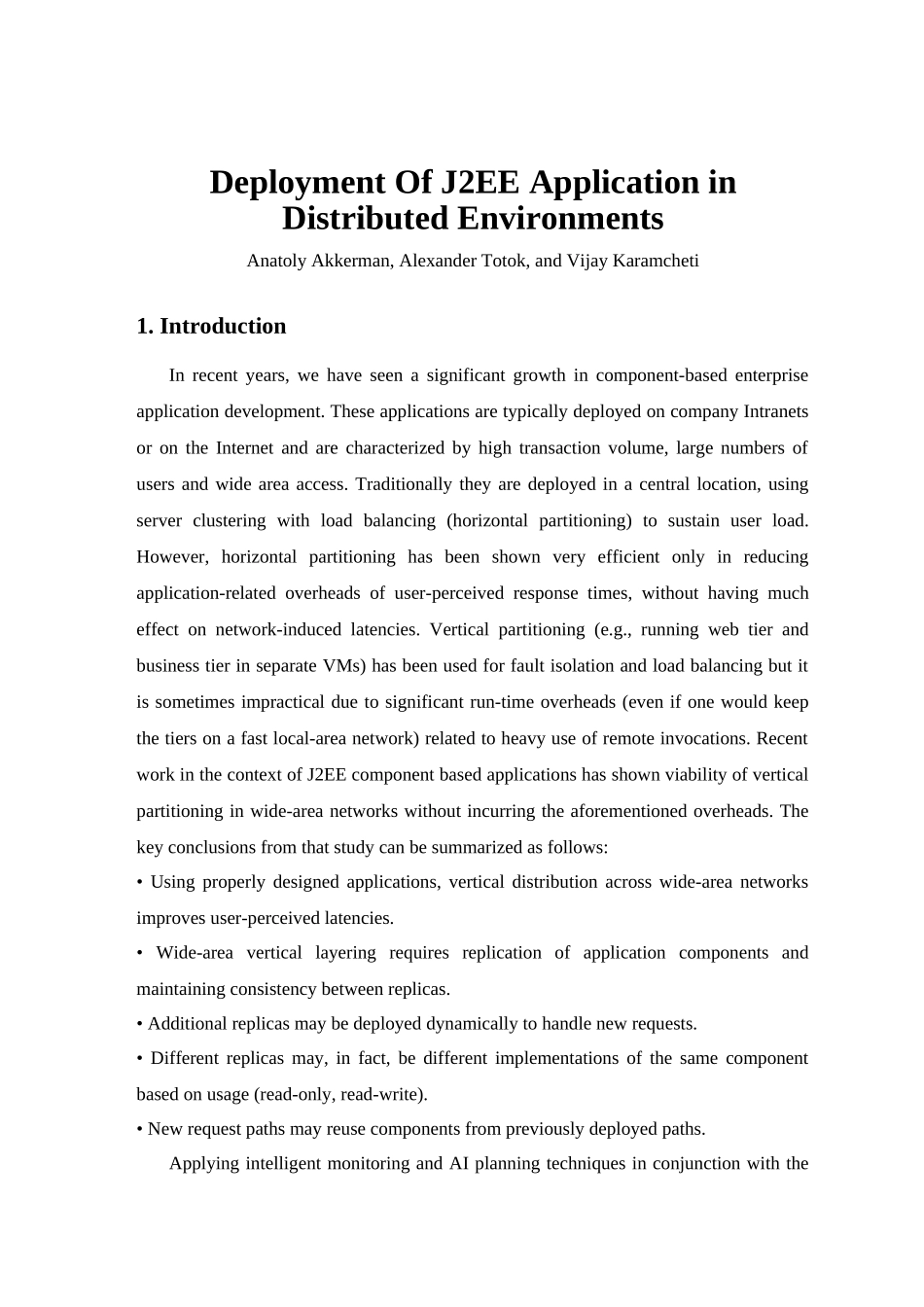专业外文翻译题 目基于J2EE在分布式环境下的底层结构的自动动态配置的应用 系 (院)专 业班 级学生姓名学 号指导老师职 称滨州学院教务处二一年三月一日〇〇Infrastructure for Automatic Dynamic Deployment Of J2EE Application in Distributed EnvironmentsAnatoly Akkerman, Alexander Totok, and Vijay Karamcheti1. IntroductionIn recent years, we have seen a significant growth in component-based enterprise application development. These applications are typically deployed on company Intranets or on the Internet and are characterized by high transaction volume, large numbers of users and wide area access. Traditionally they are deployed in a central location, using server clustering with load balancing (horizontal partitioning) to sustain user load. However, horizontal partitioning has been shown very efficient only in reducing application-related overheads of user-perceived response times, without having much effect on network-induced latencies. Vertical partitioning (e.g., running web tier and business tier in separate VMs) has been used for fault isolation and load balancing but it is sometimes impractical due to significant run-time overheads (even if one would keep the tiers on a fast local-area network) related to heavy use of remote invocations. Recent work in the context of J2EE component based applications has shown viability of vertical partitioning in wide-area networks without incurring the aforementioned overheads. The key conclusions from that study can be summarized as follows:• Using properly designed applications, vertical distribution across wide-area networks improves user-perceived latencies.• Wide-area vertical layering requires replication of application components and maintaining consistency between replicas.• Additional replicas may be...


